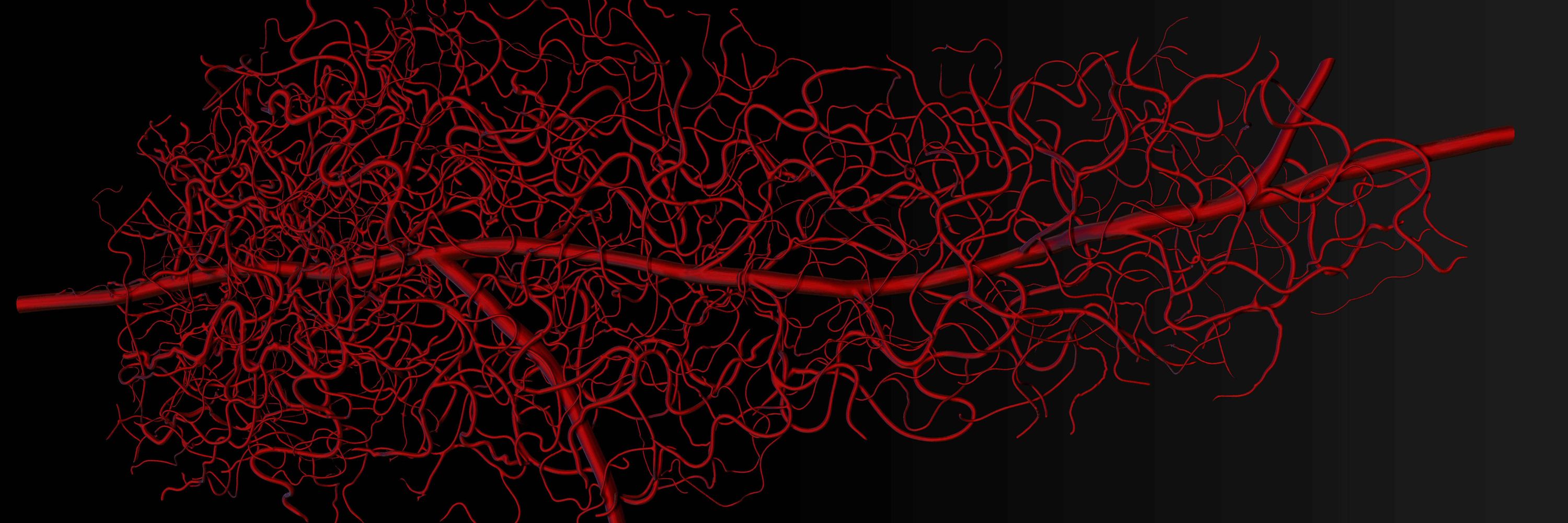
Fernando Santana
@lfsantana68.bsky.social
🔬Physiologist & Biophysicist | Vice Dean for Basic Sciences and Chair of Physiology & Membrane Biology
🧠 Champion of thematic breadth in science & medical research
📢 Exploring how structure fuels innovation
☕ Fueling ideas with coffee & conversation
🧠 Champion of thematic breadth in science & medical research
📢 Exploring how structure fuels innovation
☕ Fueling ideas with coffee & conversation
Reposted by Fernando Santana
🚨 We are recruiting postdocs! If you're interested in reproductive, stem cell/developmental biology, and/or women's health, please apply! 📝 Please repost! 🚩
More info here: hhmi.wd1.myworkdayjobs.com/en-US/Extern...
More info here: hhmi.wd1.myworkdayjobs.com/en-US/Extern...

Postdoctoral Scientist - Zhang Lab
Primary Work Address: One Shields Avenue, Davis, CA, 95616 Current HHMI Employees, click here to apply via your Workday account. The Howard Hughes Medical Institute (HHMI) advances the discovery and s...
hhmi.wd1.myworkdayjobs.com
October 24, 2025 at 4:23 PM
🚨 We are recruiting postdocs! If you're interested in reproductive, stem cell/developmental biology, and/or women's health, please apply! 📝 Please repost! 🚩
More info here: hhmi.wd1.myworkdayjobs.com/en-US/Extern...
More info here: hhmi.wd1.myworkdayjobs.com/en-US/Extern...
Reposted by Fernando Santana
The third episode of our podcast series just dropped:
navedolab.faculty.ucdavis.edu/podcasts/
This one focuses on our recent study examining vascular Panx1 channels and their role in vascular complications during diabetic hyperglycemia.
Get the paper here:
pubmed.ncbi.nlm.nih.gov/40636957/
navedolab.faculty.ucdavis.edu/podcasts/
This one focuses on our recent study examining vascular Panx1 channels and their role in vascular complications during diabetic hyperglycemia.
Get the paper here:
pubmed.ncbi.nlm.nih.gov/40636957/

Arterial Myocyte Pannexin 1 Channel Controls Vascular Reactivity in Diabetic Hyperglycemia - PubMed
These results suggest a key role for Panx1 in controlling ATP signaling through the P2Y<sub>11L</sub>/AC5/AKAP5/PKA/Ca<sub>V</sub>1.2 axis in arterial myocytes. This Panx1-led complex modulates cAMP levels, Ca<sub>V</sub>1.2 activity, and vascular reactivity in response to diabetic hyperglycemia. Th …
pubmed.ncbi.nlm.nih.gov
October 23, 2025 at 4:44 PM
The third episode of our podcast series just dropped:
navedolab.faculty.ucdavis.edu/podcasts/
This one focuses on our recent study examining vascular Panx1 channels and their role in vascular complications during diabetic hyperglycemia.
Get the paper here:
pubmed.ncbi.nlm.nih.gov/40636957/
navedolab.faculty.ucdavis.edu/podcasts/
This one focuses on our recent study examining vascular Panx1 channels and their role in vascular complications during diabetic hyperglycemia.
Get the paper here:
pubmed.ncbi.nlm.nih.gov/40636957/
Reposted by Fernando Santana
The Department of Biochemistry and Molecular Biology at UTHealth Houston has an open search for a tenure-track faculty position. If you are ready (or know someone that is) to start looking for positions, this will be a great opportunity to join the Texas Medical Center. See flyer below. 1/2

October 21, 2025 at 9:47 PM
The Department of Biochemistry and Molecular Biology at UTHealth Houston has an open search for a tenure-track faculty position. If you are ready (or know someone that is) to start looking for positions, this will be a great opportunity to join the Texas Medical Center. See flyer below. 1/2
Reposted by Fernando Santana
Happy to have started as an @hhmi.org Freeman Hrabowski Scholar! Incredibly grateful for this opportunity and am excited for some very cool new directions! We are *HIRING*, especially postdocs! Please reach out if you’re interested in uterine and pregnancy biology. Please repost!
October 9, 2025 at 7:42 PM
Happy to have started as an @hhmi.org Freeman Hrabowski Scholar! Incredibly grateful for this opportunity and am excited for some very cool new directions! We are *HIRING*, especially postdocs! Please reach out if you’re interested in uterine and pregnancy biology. Please repost!
Reposted by Fernando Santana
Our new PNAS paper "Enhanced PIEZO1 function contributes to the pathogenesis of sickle cell disease" is out: www.pnas.org/doi/10.1073/... 1/3

Enhanced PIEZO1 function contributes to the pathogenesis of sickle cell disease | PNAS
Sickle cell disease (SCD), an inherited blood disorder caused by a mutation in the
β-globin gene, is characterized by sickle erythrocytes that are ...
www.pnas.org
October 3, 2025 at 4:53 PM
Our new PNAS paper "Enhanced PIEZO1 function contributes to the pathogenesis of sickle cell disease" is out: www.pnas.org/doi/10.1073/... 1/3
Editorial on our JACC-EP paper (doi.org/10.1016/j.ja...) is out: Ed Lakatta’s “Mind Your ‘A Game’” (doi.org/10.1016/j.ja...) spotlights SAN capillary rarefaction → slower rate + more beat-to-beat variability, and lays out next tests (hypoxia vs demand; aging/sex). @jaccjournals.bsky.social
Redirecting
doi.org
September 15, 2025 at 6:51 PM
Editorial on our JACC-EP paper (doi.org/10.1016/j.ja...) is out: Ed Lakatta’s “Mind Your ‘A Game’” (doi.org/10.1016/j.ja...) spotlights SAN capillary rarefaction → slower rate + more beat-to-beat variability, and lays out next tests (hypoxia vs demand; aging/sex). @jaccjournals.bsky.social
Reposted by Fernando Santana
Major milestone achieved Wednesday: my very first grad student delivered his exit seminar. Dr. Cyrrus Espino is a science rock star and I’m lucky to have had the opportunity to contribute to his development. Very excited to see what’s to come in what will surely be a successful career. Cheers Doc!

August 29, 2025 at 6:00 PM
Major milestone achieved Wednesday: my very first grad student delivered his exit seminar. Dr. Cyrrus Espino is a science rock star and I’m lucky to have had the opportunity to contribute to his development. Very excited to see what’s to come in what will surely be a successful career. Cheers Doc!
Reposted by Fernando Santana
Happy to share the my lab's latest preprint, where we investigated sensorimotor circuit formation in the developing spinal cord. We show that proprioceptive axons target motor neurons in neighboring spinal segments to give rise to intersegmental reflex responses.
www.biorxiv.org/content/10.1...
www.biorxiv.org/content/10.1...

Activity-driven proprioceptive synaptic refinement in the developing spinal cord by complement signaling mechanisms
Proprioceptive group Ia afferents detect muscle stretch to guide effortless and purposeful movement and make monosynaptic connections with spinal α–motor neurons to mediate reflexes, such as the stret...
www.biorxiv.org
August 25, 2025 at 5:24 PM
Happy to share the my lab's latest preprint, where we investigated sensorimotor circuit formation in the developing spinal cord. We show that proprioceptive axons target motor neurons in neighboring spinal segments to give rise to intersegmental reflex responses.
www.biorxiv.org/content/10.1...
www.biorxiv.org/content/10.1...
New preprint: Beat-locked ATP imaging in mouse SA node reveals an energetic hierarchy—high-Ca-ATP gain cells set rate; low Ca-ATP gain cells expand bandwidth & stabilize under load. Pacemaking is a beat-to-beat division of labor @ucd-physiology.bsky.social. www.biorxiv.org/content/10.1...

Beat–locked ATP microdomains in the sinoatrial node map a calcium–timed energetic hierarchy and regional pacemaker roles
Pacemaker myocytes of the sinoatrial (SA) node initiate each heartbeat through coupled voltage and Ca2+ oscillators, but whether ATP supply is regulated on a beat–by–beat schedule in these cells has been unclear. Using genetically encoded sensors targeted to the cytosol and mitochondria, we tracked beat–resolved ATP dynamics in intact mouse SA node and isolated myocytes. Cytosolic ATP rose transiently with each Ca2+ transient and segregated into high– and low–gain phenotypes defined by the Ca2+–ATP coupling slope. Mitochondrial ATP flux adopted two stereotyped waveforms—Mode–1 ″gains″ and Mode–2 ″dips″. Within Mode–1 cells, ATP gains mirrored the cytosolic high/low–gain dichotomy; Mode–2 dips scaled linearly with Ca2+ load and predominated in slower-firing cells. In the intact node, high–gain/Mode–1 phenotypes localized to superior regions and low–gain/Mode–2 to inferior regions, paralleling gradients in rate, mitochondrial volume, and capillary density. Pharmacology placed the Ca2+ clock upstream of ATP production: the HCN channel blocker ivabradine slowed the ATP cycle without changing amplitude, whereas the SERCA pump inhibitor thapsigargin or the mitochondrial uncoupler FCCP abolished transients. Mode–2 recovery kinetics indicate slower ATP replenishment that would favor low–frequency, fluctuation–rich firing in a subset of cells. Together, these findings reveal beat-locked metabolic microdomains in which the Ca2+ clock times oxidative phosphorylation under a local O2 ceiling, unifying vascular architecture, mitochondrial organization, and Ca2+ signaling to coordinate energy supply with excitability. This energetic hierarchy helps explain why some SA node myocytes are more likely to set rate whereas others may widen bandwidth. ### Competing Interest Statement The authors have declared no competing interest. National Heart Lung and Blood Institute, https://ror.org/012pb6c26, HL168874 American Heart Association, https://doi.org/10.58275/AHA.25POST1378853.pc.gr.227467
www.biorxiv.org
August 22, 2025 at 11:24 PM
New preprint: Beat-locked ATP imaging in mouse SA node reveals an energetic hierarchy—high-Ca-ATP gain cells set rate; low Ca-ATP gain cells expand bandwidth & stabilize under load. Pacemaking is a beat-to-beat division of labor @ucd-physiology.bsky.social. www.biorxiv.org/content/10.1...
Reposted by Fernando Santana
The official release of our manuscript examining arterial myocyte Panx1 role in diabetic vascular dysfunction is out! Massive effort to uncover new mechanisms underlying vascular disease. Power of science! @ucdavis.bsky.social, @ucdavispharm.bsky.social
www.ahajournals.org/doi/10.1161/...
www.ahajournals.org/doi/10.1161/...

Arterial Myocyte Pannexin 1 Channel Controls Vascular Reactivity in Diabetic Hyperglycemia | Circulation Research
BACKGROUND: Diabetic hyperglycemia promotes vasoconstriction by activating an ATP-dependent P2Y11L (P2Y11-like receptor)/AC5 (adenylyl cyclase 5)/AKAP5 (A-kinase anchoring protein 5)/PKA
(protein kina...
www.ahajournals.org
August 15, 2025 at 2:18 PM
The official release of our manuscript examining arterial myocyte Panx1 role in diabetic vascular dysfunction is out! Massive effort to uncover new mechanisms underlying vascular disease. Power of science! @ucdavis.bsky.social, @ucdavispharm.bsky.social
www.ahajournals.org/doi/10.1161/...
www.ahajournals.org/doi/10.1161/...
Reposted by Fernando Santana
We’re happy to share that our methods paper and video on our mouse uterine injury surgical procedure is now out in JoVE! First paper of the lab! Congrats to first author Nathan Ng! review.jove.com/t/67977/mous...

Mouse Model of Surgical Uterine Injury and Subsequent Pregnancy Outcomes | Protocol
Scientific Article | This protocol describes a procedure for inducing uterine injury in a mouse model, followed by downstream analyses during a subsequent...
review.jove.com
August 13, 2025 at 6:30 PM
We’re happy to share that our methods paper and video on our mouse uterine injury surgical procedure is now out in JoVE! First paper of the lab! Congrats to first author Nathan Ng! review.jove.com/t/67977/mous...
Reposted by Fernando Santana
📰Latest from our lab (Open Access)!
Brain Capillary Ion Channels: Physiology and Channelopathies
This review attempts to concisely cover a fast-evolving research field on channels in🧠capillaries
@apspublications.bsky.social
journals.physiology.org/doi/abs/10.1...
Brain Capillary Ion Channels: Physiology and Channelopathies
This review attempts to concisely cover a fast-evolving research field on channels in🧠capillaries
@apspublications.bsky.social
journals.physiology.org/doi/abs/10.1...
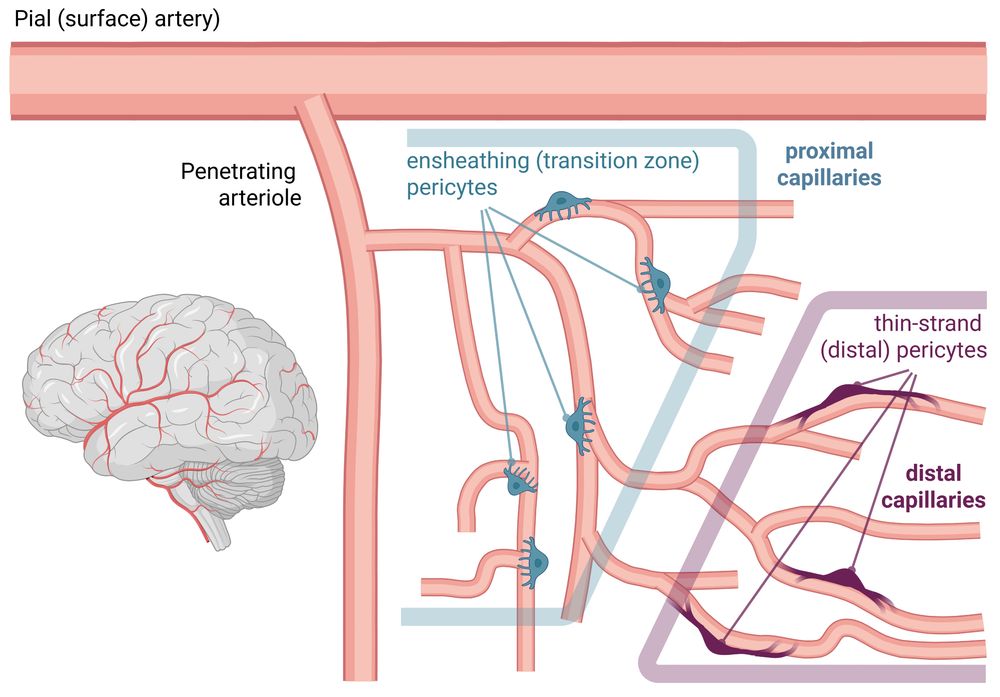
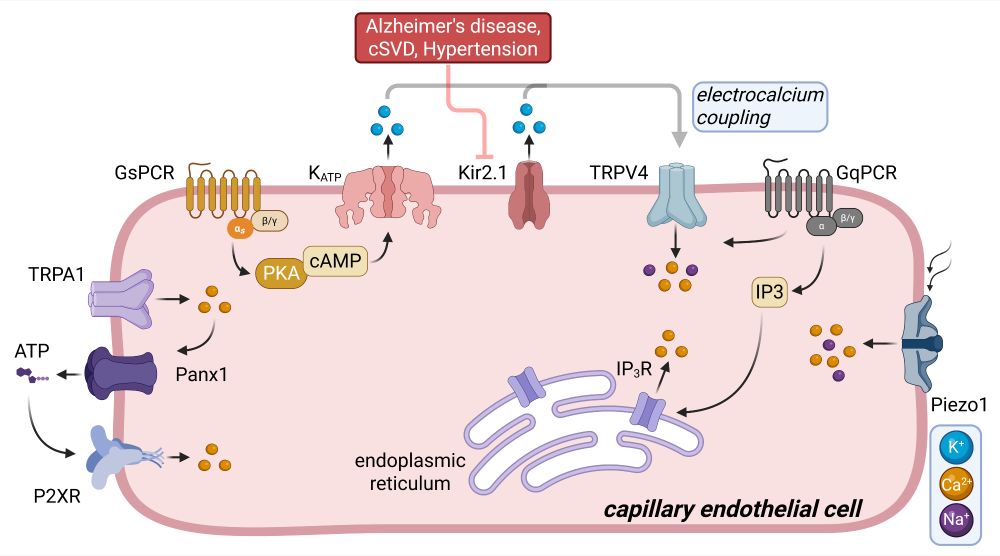
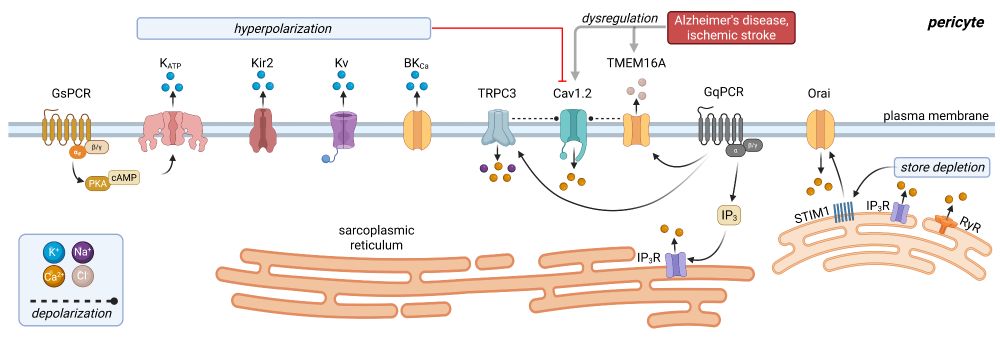
August 6, 2025 at 5:02 PM
📰Latest from our lab (Open Access)!
Brain Capillary Ion Channels: Physiology and Channelopathies
This review attempts to concisely cover a fast-evolving research field on channels in🧠capillaries
@apspublications.bsky.social
journals.physiology.org/doi/abs/10.1...
Brain Capillary Ion Channels: Physiology and Channelopathies
This review attempts to concisely cover a fast-evolving research field on channels in🧠capillaries
@apspublications.bsky.social
journals.physiology.org/doi/abs/10.1...
Reposted by Fernando Santana
First highlight...
Senator Capito started of the discussion saying that the bill contains AN INCREASE for NIH.
The details are not available, but the bill will be released ofter the hearing.
This is not a done-deal, but it does show where the Senate is on a bipartisan basis.
Senator Capito started of the discussion saying that the bill contains AN INCREASE for NIH.
The details are not available, but the bill will be released ofter the hearing.
This is not a done-deal, but it does show where the Senate is on a bipartisan basis.
July 31, 2025 at 4:12 PM
First highlight...
Senator Capito started of the discussion saying that the bill contains AN INCREASE for NIH.
The details are not available, but the bill will be released ofter the hearing.
This is not a done-deal, but it does show where the Senate is on a bipartisan basis.
Senator Capito started of the discussion saying that the bill contains AN INCREASE for NIH.
The details are not available, but the bill will be released ofter the hearing.
This is not a done-deal, but it does show where the Senate is on a bipartisan basis.
Reposted by Fernando Santana
Large-pore channels: the Transformers of membrane proteins, versatile, dramatic, and never just selective or passive conduits.
Not just simple (typical) ion channels, they’re molecular multitaskers we’re beginning to comprehend.
Don’t miss the first-ever special issue dedicated to this!
Not just simple (typical) ion channels, they’re molecular multitaskers we’re beginning to comprehend.
Don’t miss the first-ever special issue dedicated to this!
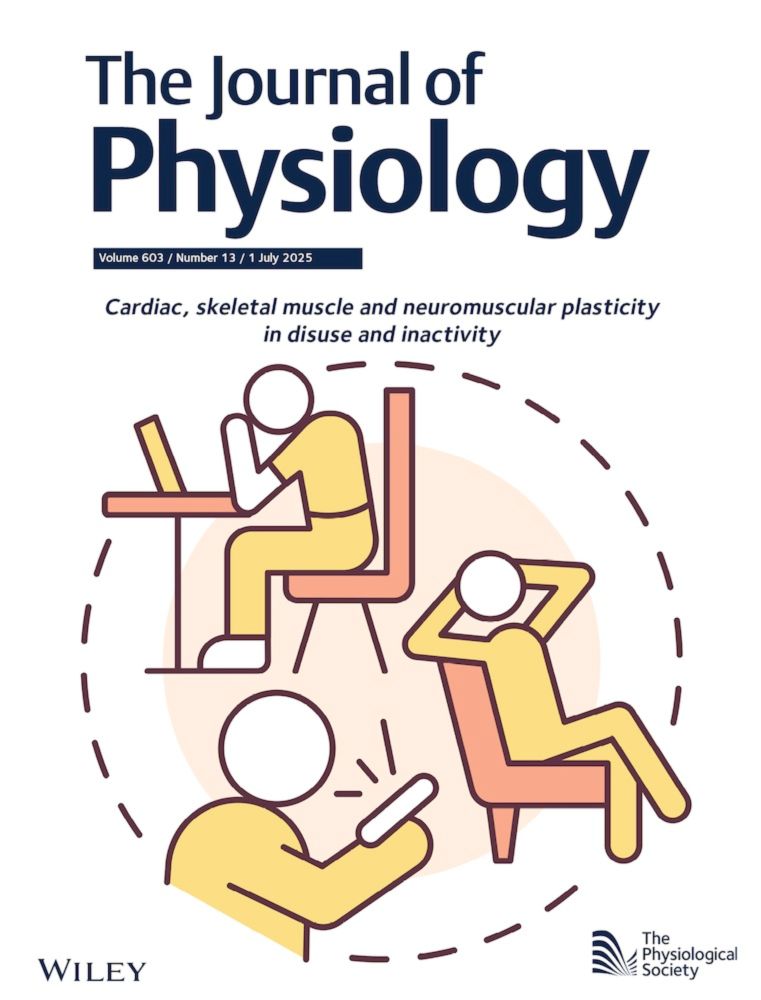
Current advances in large‐pore channels: From structure–function to physiology and disease
Click on the article title to read more.
physoc.onlinelibrary.wiley.com
July 29, 2025 at 6:45 PM
Large-pore channels: the Transformers of membrane proteins, versatile, dramatic, and never just selective or passive conduits.
Not just simple (typical) ion channels, they’re molecular multitaskers we’re beginning to comprehend.
Don’t miss the first-ever special issue dedicated to this!
Not just simple (typical) ion channels, they’re molecular multitaskers we’re beginning to comprehend.
Don’t miss the first-ever special issue dedicated to this!
Reposted by Fernando Santana
Exciting news! The EPIC/SGP Symposium at UC Davis will be accompanied by a special issue in the Journal of General Physiology. Stay tuned for more details about this incredible event celebrating cutting-edge research on ion channels!
📣 #CallForPapers 📣 on the topic of the inaugural in-person Electrophysiology & Ion Channel (EpIC) meeting, “Emerging Research on Ion Channels in Health & Disease” – w/ Guest Editors Jelena Baranovic, Osama Harraz, Conor McClenaghan, & Lejla Zubcevic 👉 rupress.org/JGP/pages/ca...

July 23, 2025 at 2:05 AM
Exciting news! The EPIC/SGP Symposium at UC Davis will be accompanied by a special issue in the Journal of General Physiology. Stay tuned for more details about this incredible event celebrating cutting-edge research on ion channels!
Manning & Rivera et al. (www.jacc.org/doi/10.1016/...) show that pruning just a few capillaries in the SA node plunges the heart’s pacemaker into metabolic overdraft—slowing the rate and jacking up beat-to-beat variability. The physiological equivalent of running on fumes. @jaccjournals.bsky.social
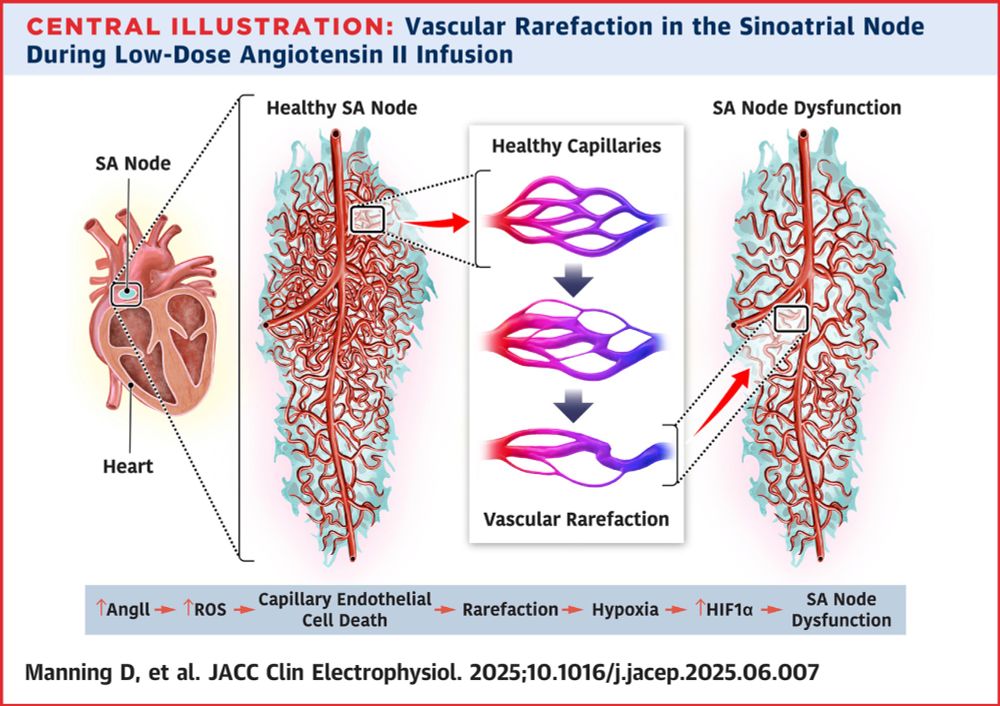
Microvascular Rarefaction in the Sinoatrial Node: A Potential Mechanism for Pacemaker Dysfunction in Early HFpEF
www.jacc.org
July 23, 2025 at 6:06 PM
Manning & Rivera et al. (www.jacc.org/doi/10.1016/...) show that pruning just a few capillaries in the SA node plunges the heart’s pacemaker into metabolic overdraft—slowing the rate and jacking up beat-to-beat variability. The physiological equivalent of running on fumes. @jaccjournals.bsky.social
Reposted by Fernando Santana
Check out our latest work co-led by @dcsoto.bsky.social and @jmuribescr.bsky.social identifying hundreds of human duplicated gene families using the new T2T-CHM13 assembly, with a focus on those potentially contributing to brain evolution 🧪: authors.elsevier.com/a/1lTQtL7PXu...
authors.elsevier.com
July 21, 2025 at 4:26 PM
Check out our latest work co-led by @dcsoto.bsky.social and @jmuribescr.bsky.social identifying hundreds of human duplicated gene families using the new T2T-CHM13 assembly, with a focus on those potentially contributing to brain evolution 🧪: authors.elsevier.com/a/1lTQtL7PXu...
Reposted by Fernando Santana
So excited to share our study just published in eLife, “Harnessing AlphaFold to reveal hERG channel conformational state secrets” doi.org/10.7554/eLif...

Harnessing AlphaFold to reveal hERG channel conformational state secrets
Customized AlphaFold-based modeling of distinct functional states of the hERG channel, a major drug anti-target, significantly improves drug affinity predictions, enhancing cardiac safety screening fo...
doi.org
July 14, 2025 at 11:21 PM
So excited to share our study just published in eLife, “Harnessing AlphaFold to reveal hERG channel conformational state secrets” doi.org/10.7554/eLif...
🫀 NEW preprint: the heart lives paycheck-to-paycheck for energy. Real-time ATP imaging shows mitochondria cash out ATP every beat—no savings account. Females craft precision hotspots, males flex bigger surges. Read on: www.biorxiv.org/content/10.1...

Demonstration of Beat-to-Beat, On-Demand ATP Synthesis in Ventricular Myocytes Reveals Sex-Specific Mitochondrial and Cytosolic Dynamics.
The substantial energetic demands on ventricular myocytes imposed by the transport of ions and cross–bridge cycling associated with each heartbeat are well known, yet the spatiotemporal dynamics of AT...
www.biorxiv.org
July 11, 2025 at 1:33 PM
🫀 NEW preprint: the heart lives paycheck-to-paycheck for energy. Real-time ATP imaging shows mitochondria cash out ATP every beat—no savings account. Females craft precision hotspots, males flex bigger surges. Read on: www.biorxiv.org/content/10.1...
Reposted by Fernando Santana
Excited to pre-release the latest from the lab on how arterial myocyte Panx1 controls vascular reactivity in diabetes. Massive effort from the M&M Team in collaboration with @brantisakson.bsky.social and Xiang Lab
Check our latest work from the M&M lab on the role of SMC Pannexin 1 in diabetic hyperglycemia! And thanks to everyone involved in this! Ole 💃 www.ahajournals.org/doi/10.1161/...

Arterial Myocyte Pannexin 1 Channel Controls Vascular Reactivity in Diabetic Hyperglycemia | Circulation Research
BACKGROUND: Diabetic hyperglycemia promotes vasoconstriction by activating an ATP-dependent P2Y11L (P2Y11-like receptor)/AC5 (adenylyl cyclase 5)/AKAP5 (A-kinase anchoring protein 5)/PKA
(protein kina...
www.ahajournals.org
July 10, 2025 at 7:37 PM
Excited to pre-release the latest from the lab on how arterial myocyte Panx1 controls vascular reactivity in diabetes. Massive effort from the M&M Team in collaboration with @brantisakson.bsky.social and Xiang Lab
Reposted by Fernando Santana
Demonstration of Beat-to-Beat, On-Demand ATP Synthesis in Ventricular Myocytes Reveals Sex-Specific Mitochondrial and Cytosolic Dynamics. https://www.biorxiv.org/content/10.1101/2025.07.07.663572v1
July 11, 2025 at 1:02 AM
Demonstration of Beat-to-Beat, On-Demand ATP Synthesis in Ventricular Myocytes Reveals Sex-Specific Mitochondrial and Cytosolic Dynamics. https://www.biorxiv.org/content/10.1101/2025.07.07.663572v1
Reposted by Fernando Santana
Congrats to HHMI Freeman Hrabowski Scholars @channyskye.bsky.social , Josefina del Mármol (@delmarmollab.bsky.social), @yvetteefisher.bsky.social and Theanne Griffith (@doctheagrif.bsky.social), named 2025 McKnight Scholars for their demonstrated commitment to neuroscience & mentoring others! 🌟
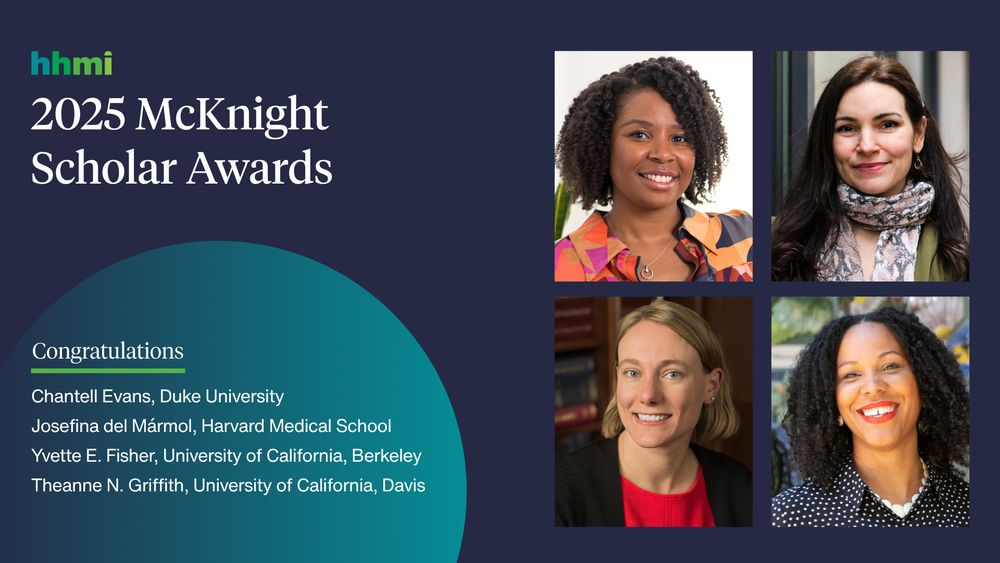
June 20, 2025 at 5:08 PM
Congrats to HHMI Freeman Hrabowski Scholars @channyskye.bsky.social , Josefina del Mármol (@delmarmollab.bsky.social), @yvetteefisher.bsky.social and Theanne Griffith (@doctheagrif.bsky.social), named 2025 McKnight Scholars for their demonstrated commitment to neuroscience & mentoring others! 🌟
Reposted by Fernando Santana
Check out our latest work in AJP-Heart and Circ Physiology: "Bend it like BIN1: how a membrane-curving adaptor protein shapes cardiac physiology". As a soccer fan I couldn't resist the title! journals.physiology.org/doi/full/10....

June 25, 2025 at 9:43 AM
Check out our latest work in AJP-Heart and Circ Physiology: "Bend it like BIN1: how a membrane-curving adaptor protein shapes cardiac physiology". As a soccer fan I couldn't resist the title! journals.physiology.org/doi/full/10....
Reposted by Fernando Santana
Today I had the honor of speaking in front of nearly 3000 people today at the Woodland #NoKings rally. WE FEAR NO KING BECAUSE WE DONT HAVE ONE ✊🏾✊🏾✊🏾✊🏾 let’s gooooooo
June 14, 2025 at 8:07 PM
Today I had the honor of speaking in front of nearly 3000 people today at the Woodland #NoKings rally. WE FEAR NO KING BECAUSE WE DONT HAVE ONE ✊🏾✊🏾✊🏾✊🏾 let’s gooooooo
Reposted by Fernando Santana
Please see our open call for the upcoming special issue! We look forward to your submissions!
📣 CALL FOR PAPERS 📣
For our first #SpecialIssue edited by @vyy-sf.bsky.social
focusing on:
💉Precision medicine
🏠Structural biology
🧬Protein structure
🔄Protein dynamics
🖊️Biomarkers
🔗For full list of topics👇
www.sciencedirect.com/special-issu...
#proteinstructure #precisionmedicine
For our first #SpecialIssue edited by @vyy-sf.bsky.social
focusing on:
💉Precision medicine
🏠Structural biology
🧬Protein structure
🔄Protein dynamics
🖊️Biomarkers
🔗For full list of topics👇
www.sciencedirect.com/special-issu...
#proteinstructure #precisionmedicine

June 11, 2025 at 4:16 PM
Please see our open call for the upcoming special issue! We look forward to your submissions!

